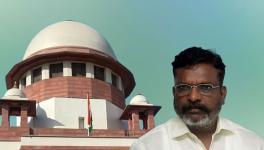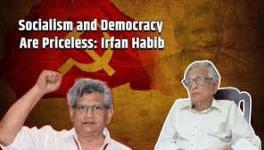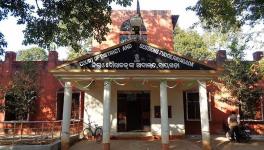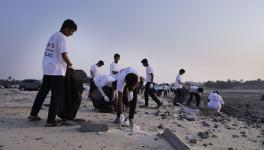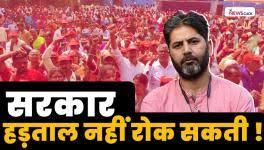How English Language Initiated the Idea of Nationalism in India
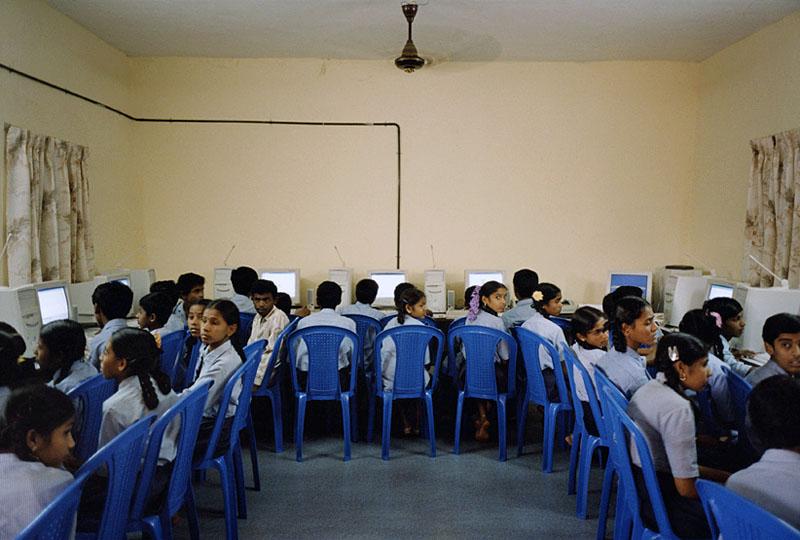
India got consciously organised no earlier than from the mid-19th century onwards. If we seek a benchmark period for the modern Indian nation-state that is a clear successor of the present landmass, then it would be that of the first rebellion against the British colonial rulers in 1857. Now, which forces invested their physical and mental energy to organise and enforce that revolt. The forces that contributed to protect the land from the control of the British imperial power mainly were the Shudras, Dalits and Adivasis. Without their peasantry and youth employed in different regiments of the British Army, the rebellion of 1857 would not have been possible.
The Rashtriya Swayamsevak Sangh and liberal Dwija writers wrote history, but no Brahmin books such as the Vedas, Ramayana or Mahabharatam were responsible for the rebellion, nor were their sentiments about cow and pig fat. The peasants who suffered under the yoke of the British tax regime and exploitation by the British colonial government—for whom many Dwija officials worked—forced the farming communities to rise in rebellion right from the village level. Hardly any Shudra, Dalit or Adivasi officials worked for the British regime at the time.
Even before the British came to India, Brahmin, Kayastha, and Khatri communities formed the officialdom Mughal administration, apart from the Muslims. The Bania or trader communities continued their village and town-level businesses throughout British rule and pre-Mughal and Mughal rules. Of course, all Muslims were not rulers, and the poor Muslims suffered along with the Shudra, Dalit, Adivasi productive masses. It is well documented that the accumulated wealth of present-day Banias has a centuries-long history owed to the ‘reservation’ in their favour in businesses and professions. Besides, the Shudra, Dalit and Adivasi people never got entry into government jobs in those days because no rulers in this land overturned the Brahmanical dictum against educating these communities.
The Shudras, the most significant human mass of India that is Bharat, as the Preamble of the Constitution calls it, are the lifeblood of this nation. Only if the body and brain of an entire people function on a philosophical foundation that is humanitarian can it secure the release of the landmass from foreign bondage, then seek sustenance as a nation. After all, a land would need to design modes and methods that can release the energies required to take back their land from an occupying force. The Shudra, Dalit and Adivasis played that crucial role even though they were prevented from educating themselves.
In the last decades of its rule, the British administration opened up school education to these groups. This change is how Mahatma Jotirao Phule, Savitribai Phule and BR Ambedkar could emerge as the first Shudra and Dalit intellectuals who challenged the millennia-old Varna-Dharma-Jaati exploitation and oppression. For the first time in these communities’ living history, they got educated intellectuals who could read and write in a globally understood—not just national—language, which is English. It is now that they took their first steps toward liberation.
But even this process of liberation was manipulated, and after India attained freedom, Nehruvian governments introduced the dual model of education. They made English the medium of instruction in private schools and “regional” languages the medium in government schools. The result is that the productive castes still suffer an unequal existence in all spheres of life. When English became the language of the British rulers in India in 1835, the Shudra, Dalit and Adivasi people were entirely left out of the education system.
Brahmins did not permit the emergence of a universal educational system. Even after the first English medium school started in Kolkata in 1817, the colonial language first went into the homes of the Dwijas, who had controlled the Sanskrit language until then. For example, Raja Ram Mohan Roy (1772-1833), from a Bengali Brahmin Zamindari family that interacted with British officials, learned English in the late 18th century. There was more than a linguistic relationship between the Sanskritic Brahmins of India and the beef-eating British English-speaking administrators. Roy was the son of Ramkanta Roy, a zamindar from a so-called noble Vaishnavite Brahmin family from Radhanagar. The father, too, was educated in the Sanskrit tradition and had also learned Persian and English. Roy was trained as a pandit to reach a Shastri’s position and was also taught Sanskrit, Persian and English from childhood. In those days, his education in a new language like English would not have been possible without a tutor, perhaps a British one.
At any rate, Brahmin life was strictly Varna-dharmic in those days, and it was accompanied by the merciless practice of untouchability against fellow human beings. That Brahmanical parampara or tradition was imposed at will on the Shudras and Dalits. Brahmanical noble-ness was never humanitarian. Central to sustaining its imposition was ensuring the lack of education of the Shudras and Dalits, though they lived in the same village and urban societies. The Adivasis, for a long time, were away from village and town life that was the centre of production and distribution of goods and commodities. The Shudras and Dalits were part of that life, so they suffered its graded caste and cultural impositions. In any case, English language education started in India with Ram Mohan Roy, who made it a part of the school education system, with William Carey, a British missionary who had settled in Bengal.
The second most significant man in modern India was Dadabhai Naoroji (1825-1917). He was born in a Parsi Zoroastrian Gujarati family. Educated at the Elphinstone Institute School, perhaps one of the earliest English medium schools in the Bombay province, he was patronised by the ruler of Baroda, Sayajirao Gaekwad III, who made him diwan or minister of his state. The Parsi community, though small in number, was highly educated. Naoroji became a member of the British Parliament and took the lead to establish the Indian National Congress in 1885 along with the Scottish Indian Civil Service officer AO Hume, who wanted to reform the Indian administration with help from educated Indians. So even though Naoroji was more or less the same age as Mahatma Jotirao Phule (1827-1890), because of his community’s educational background, he got help not just from the ruler of Baroda but from British officials.
It is also interesting that the maharaja family of Baroda was Shudra, but it was given Kshatriya status because it had a ruling position. Brahmin prime ministers and head priests ran all Shudra kingdoms. Even such a king never educated his children in English medium schools in India nor sent them to England for higher studies. Yet, this family later financed Dr BR Ambedkar’s education at Columbia University in the United States.
We must understand this phenomenon: Irrespective of economic status, the Shudras were frightened of education as it was said to be un-Shudralike to get educated. Rumours would spread about how the gods would get angry if the Shudras started reading and writing. The Brahmanical ideology of control through caste made myth and superstition a part of India’s historical heritage. Over millennia, they injected the fear of education within the Shudra, Dalits and Adivasis. They fostered the psychology of fearing education, which confined all—except them—to local languages or oral traditions and prevented them from reading and writing even in colonial times.
The author is a political theorist, social activist and author. He has been campaigning for English medium education in government schools for 30 years. The views are personal
Get the latest reports & analysis with people's perspective on Protests, movements & deep analytical videos, discussions of the current affairs in your Telegram app. Subscribe to NewsClick's Telegram channel & get Real-Time updates on stories, as they get published on our website.










